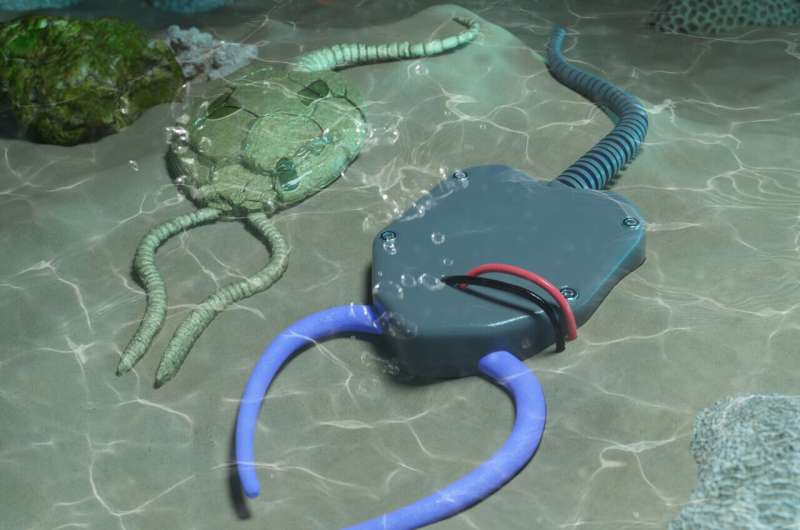This article has been reviewed according to Science X's editorial process and policies. Editors have highlighted the following attributes while ensuring the content's credibility:
fact-checked
trusted source
proofread
How ancient sea creatures can inform soft robotics

Soft robotics is the study of creating robots from soft materials, which has the advantage of flexibility and safety in human interactions. These robots are well-suited for applications ranging from medical devices to enhancing efficiency in various tasks. Additionally, using different forms of robotic movement may also serve us well in exploring the ocean or space, or doing certain jobs in those environments.
To broaden our understanding of locomotion, Richard Desatnik, who works in the labs of Philip LeDuc and Carmel Majidi at Carnegie Mellon University and collaborates with paleontologists from Europe, turns to the past. The team creates robots with the movement of ancient animals such as pleurocystitids, a sea creature that lived around 500 million years ago.
Desatnik presents their findings from the process of building a soft robot based on pleurocystitids at the 68th Biophysical Society Annual Meeting, held February 10–14, 2024 in Philadelphia, Pennsylvania.
"We've learned a lot from modern creatures, but that's only 1% of the animals that have existed during our planet's history, and we want to see if there is something we can learn from the other 99% of creatures that once roamed the Earth," Desatnik said. "There are animals that were very successful for millions of years and the reason they died out wasn't from a lack of success from their biology—there may have been a massive environmental change or extinction event."
Desatnik and colleagues started off with fossils of pleurocystitids, which are related to present-day sea stars and sea urchins but that had a muscular stem—a kind of tail—to move. They used CT scans to get a better idea of the 3D shape. Computer simulations suggested the ways it may have propelled itself through the water. Based on these data, they built a soft robot that mimics the prehistoric creature.
Their work suggests that a sweeping motion of the stem could have helped these animals glide along the ocean floor. They also found that a longer stem—which the fossil record suggests pleurocystitids developed over generations—could have made them faster without requiring much more energy.
These underwater soft robots may help in the future, "whether it's geologic surveying, or fixing all the machinery that we have underwater," Desatnik points out.
The researchers' approach of using extinct animals to inform soft robotic design, which they call paleobionics, has the potential to further our understanding of evolution, biomechanics, and soft robot movements.


















